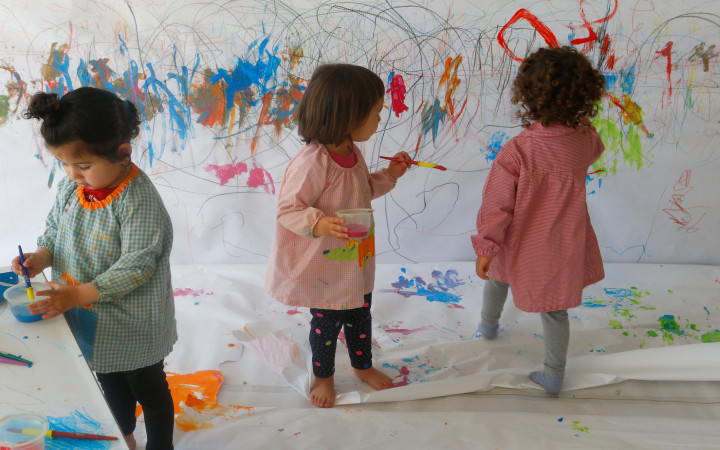Today’s Wonder of the Day was inspired by noor. noor Wonders, “How to make paint out of natural things outside?” Thanks for WONDERing with us, noor!
Today, it's easy to find paint. Specialty art stores, large retail stores, and even local supermarkets offer a wide variety of paints for children to use to create priceless works of art destined for the front of the refrigerator.
Long, long ago, though, these stores didn't exist. Artists who wanted to paint couldn't just buy the colors of paint that they wanted to use. They had to make their own homemade paint from scratch.
Cave paintings have been found that are over 40,000 years old. The first humans to paint on the walls of caves likely used nearby minerals and materials like charcoal.
The Native Americans that first lived in the United States often made their own paints out of materials they found in the world around them. To make paint, they had to combine multiple materials.
To make paint, you need three things: pigment, binder, and an emulsifier. The pigment gives the paint its color. The binder is sticky and holds the pigment together. The emulsifier makes the paint flow, so that it can be spread on a surface.
Native Americans used many different types of natural materials for binders, including milk, eggs, sap from plants, animal fats, cactus juice, and even blood. Common emulsifiers included water and soap-like substances from yucca plants.
To make many different colors, Native Americans were very creative in finding materials to use as pigments. Almost anything that had color and could be crushed and ground into a powder could be used as a pigment. These things included clays, minerals, ores, rocks, soils, and many types of plants, flowers, and fruits.
In particular, Native Americans often used roots, berries, and tree bark to make pigments for face paints. They would crush the items and grind them into a paste to blend with other materials to form paint.




